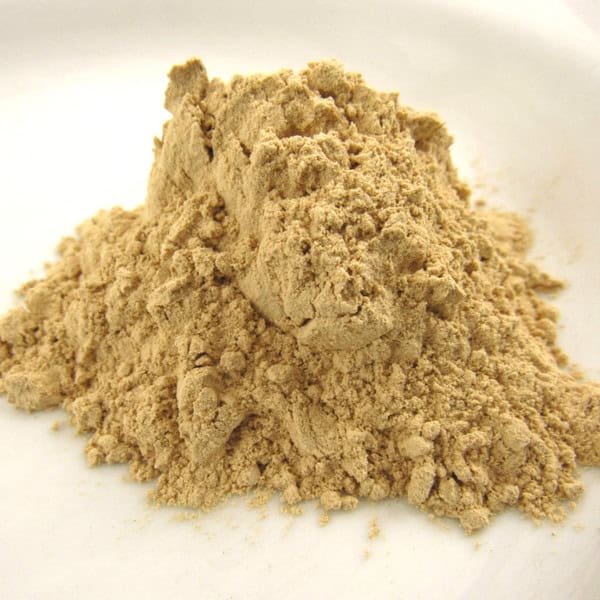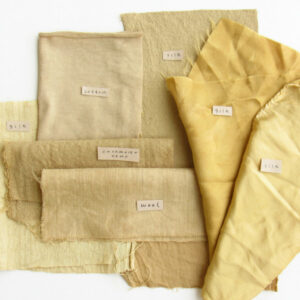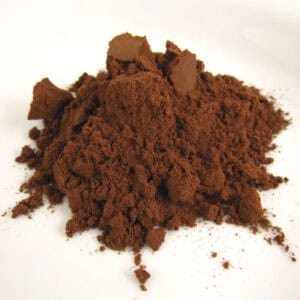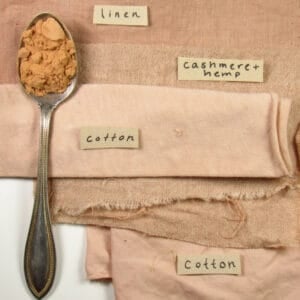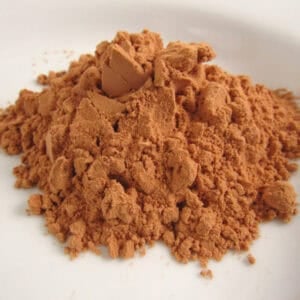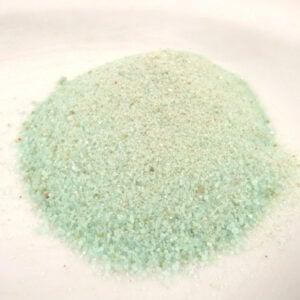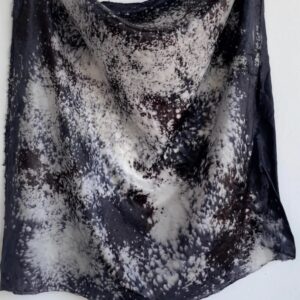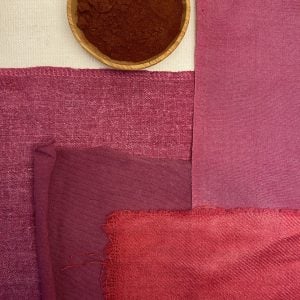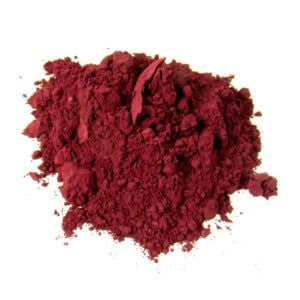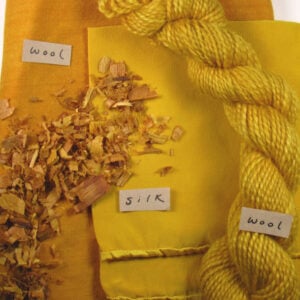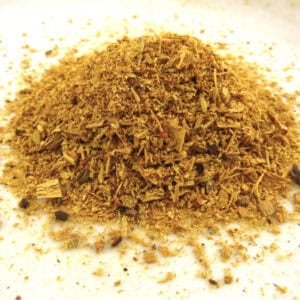Gallo Tannin extract
$23.00 – $98.00Price range: $23.00 through $98.00
Description
Gallo tannin extract (sometimes refered to simply as tannin) comes from gall nuts, which contain approximately 50-60% tannin and has a lovely tea-like aroma. The dye is very light, imparting a subtle beige color. Its power comes when it is combined with iron to create silver, gray and black in combination with other dyes.
250g of tannin will mordant approximately 5000g (11 lbs) of goods when used at 5% of the weight of fiber (WOF). For more detailed instructions, please see our page on natural dye extracts.
If you are interested in other dyes that have high tannin content, we carry many other options:
- Tara is a very light tannin, similar to our Tannin extract. When combined with iron, makes a cool gray.
- Chestnut imparts a light yellow hue and when combined with Iron, makes a warm gray.
- Myrobalan imparts a medium yellow hue and with Iron, makes a warm gray. If you are using an alum mordant, the gray shifts to a cooler hue.
- Cutch is a medium to dark brown
- Wattle dyes a light rosy beige.
- Walnut hulls create a silver-beige to dark brown
From our Feedback Friday series:
I’m about to place an order but I can’t make up my mind on what to choose between gallo-tannin and Tara.
In the gallo description it says that “Tara is a very light tannin, similar to our tannin extract.” It also says that gallo “contains approximately 50-60% tannin” and Tara is “between 30 and 50% tannin”. If I understand correctly, gallo can be the same or twice the strength of tara?
It is possible that gallo-tannin has more tannin than tara but the percentage varies, but generally, gallo-tannin is the “strongest” tannin.
I’m developing a line of natural dyed table linens. Up to now, I was using aluminum acetate + gallo or tara pre-treatment + wheat bran post-bath method for mordanting cellulose fabrics.
The best procedure for color and lightfastness is tannin first, then aluminum acetate, then wheat bran or calcium carbonate post bath.
I know that a tannin pre-treatment has an impact on the final color, my question is would using a colored tannin for pre-treatment help make the gradual fading of color less visible?
Again, possible. The way I look at it is that the medium and dark tannins influence the color, so I normally go toward light tannins, not wanting to influence the shade. However you are asking if a darker tannin will influence a darker shade, so I have to say that it is probably the case. Great question!
Will using a higher WOF aluminum acetate increase the colorfastness OR the “darkness” of the shade? Same question for tannins, will a higher WOF increase colorfastness OR “darkness”?
It is possible to use up to 10% aluminum acetate but then costs go up. What I am seeing with most cellulose fibers is that they require a very thorough scour in 160-180F water for 20-30 minutes with up to 4% soda ash. We normally use 1% for PFD fabric, 1-2% for lightweight fabrics and 2-4% for heavy fabrics. The scour water looks like black tea, and this can impede mordant and color take-up. Rinse well then proceed to tannin bath.
- Scour as above, then create a tannin bath, process hot (160F) for 1 hour. Remove but do not rinse. You can let it soak overnight in the bath too after bringing it to temp. It is also possible to create a room temperature tannin bath and soak, but your soak time should be 2 hours to overnight. Remove and proceed to aluminum acetate bath.
- Aluminum acetate at 8%, process overnight cold by soaking in solution. I don’t rinse after this step.
- Wheat or chalk post-bath, 15-30 minutes, cold. I do rinse after this step then proceed to dyeing. You may also dry the fabric after this step and dye later.
Additional information
| Weight | N/A |
|---|---|
| Dimensions | N/A |
| Weight | 100 gm, 250 gm, 500 gm |
Related products
-
Cutch Extract
$12.00 – $99.00Price range: $12.00 through $99.00 Select options This product has multiple variants. The options may be chosen on the product page -
Chestnut Extract
$17.00 – $51.00Price range: $17.00 through $51.00 Select options This product has multiple variants. The options may be chosen on the product page -
Aquarelle Tannin Liquid
$26.00 – $73.00Price range: $26.00 through $73.00 Select options This product has multiple variants. The options may be chosen on the product page -
Wattle Extract
$16.00 – $52.00Price range: $16.00 through $52.00 Select options This product has multiple variants. The options may be chosen on the product page -
Iron Powder (Ferrous Sulfate)
$10.00 – $26.50Price range: $10.00 through $26.50 Select options This product has multiple variants. The options may be chosen on the product page
You may also like…
-
Online Workshop Recording : Chromatic Transformations: Natural Dye Chemistry and pH-Responsive Color Shifting on Cotton & Silk – RECORDING
$225.00 Add to cart -
Lac Extract
$25.00 – $130.00Price range: $25.00 through $130.00 Select options This product has multiple variants. The options may be chosen on the product page -
Osage Orange Sawdust
$13.00 – $32.00Price range: $13.00 through $32.00 Select options This product has multiple variants. The options may be chosen on the product page

